The Development and Audit of a Foot Clinic Antibiotic Protocol
advertisement
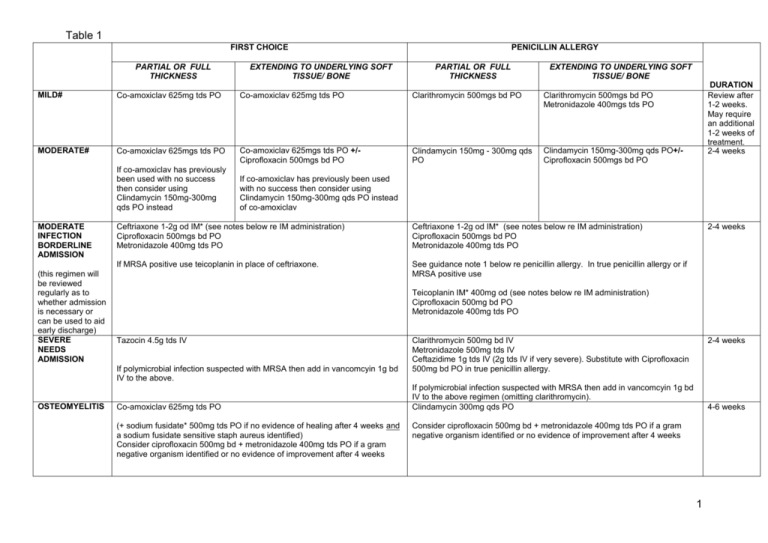
Table 1 FIRST CHOICE PARTIAL OR FULL THICKNESS EXTENDING TO UNDERLYING SOFT TISSUE/ BONE PENICILLIN ALLERGY PARTIAL OR FULL THICKNESS EXTENDING TO UNDERLYING SOFT TISSUE/ BONE MILD# Co-amoxiclav 625mg tds PO Co-amoxiclav 625mg tds PO Clarithromycin 500mgs bd PO Clarithromycin 500mgs bd PO Metronidazole 400mgs tds PO MODERATE# Co-amoxiclav 625mgs tds PO Co-amoxiclav 625mgs tds PO +/Ciprofloxacin 500mgs bd PO Clindamycin 150mg - 300mg qds PO Clindamycin 150mg-300mg qds PO+/Ciprofloxacin 500mgs bd PO If co-amoxiclav has previously been used with no success then consider using Clindamycin 150mg-300mg qds PO instead MODERATE INFECTION BORDERLINE ADMISSION (this regimen will be reviewed regularly as to whether admission is necessary or can be used to aid early discharge) SEVERE NEEDS ADMISSION If co-amoxiclav has previously been used with no success then consider using Clindamycin 150mg-300mg qds PO instead of co-amoxiclav Ceftriaxone 1-2g od IM* (see notes below re IM administration) Ciprofloxacin 500mgs bd PO Metronidazole 400mg tds PO Ceftriaxone 1-2g od IM* (see notes below re IM administration) Ciprofloxacin 500mgs bd PO Metronidazole 400mg tds PO If MRSA positive use teicoplanin in place of ceftriaxone. See guidance note 1 below re penicillin allergy. In true penicillin allergy or if MRSA positive use Teicoplanin IM* 400mg od (see notes below re IM administration) Ciprofloxacin 500mg bd PO Metronidazole 400mg tds PO Tazocin 4.5g tds IV If polymicrobial infection suspected with MRSA then add in vancomcyin 1g bd IV to the above. OSTEOMYELITIS DURATION Review after 1-2 weeks. May require an additional 1-2 weeks of treatment. 2-4 Seeweeks guidance below re LFT monitoring if treatment continues beyond 2 2-4 weeks weeks Co-amoxiclav 625mg tds PO (+ sodium fusidate* 500mg tds PO if no evidence of healing after 4 weeks and a sodium fusidate sensitive staph aureus identified) Consider ciprofloxacin 500mg bd + metronidazole 400mg tds PO if a gram negative organism identified or no evidence of improvement after 4 weeks Clarithromycin 500mg bd IV Metronidazole 500mg tds IV Ceftazidime 1g tds IV (2g tds IV if very severe). Substitute with Ciprofloxacin 500mg bd PO in true penicillin allergy. 2-4 weeks If polymicrobial infection suspected with MRSA then add in vancomcyin 1g bd IV to the above regimen (omitting clarithromycin). Clindamycin 300mg qds PO 4-6 weeks Consider ciprofloxacin 500mg bd + metronidazole 400mg tds PO if a gram negative organism identified or no evidence of improvement after 4 weeks 1 IM antibiotics should only be given where there are appropriate facilities available to treat anaphylaxis. Ceftriaxone 2g IM should be given as two separate 1g injections in different sites. # If patient is MRSA positive then prescribe according to sensitivities (combination of 2 of the following oral antibiotics, doxycycline, trimethoprim, rifampicin, fusidic acid (but do not use fusidic acid in combination with rifampicin). Discuss with a Medical Microbiologist if sensitivities not available. Co-amoxiclav may cause cholestatic jaundice if use is prolonged, especially in patients over 65 years. If treatment continues over 2 weeks liver function tests (LFTs) should be carried out fortnightly for the first month and then monthly from then on for the duration of treatment. Cholestatic jaundice may occur up to 6 weeks after treatment is stopped. *Sodium fusidate may cause an elevation of LFTs. Perform LFTs at baseline and then every 2 weeks during treatment for the first month. After this time according to clinical judgement – minimum requirement is every 4 weeks throughout treatment. 2
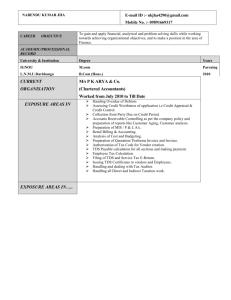
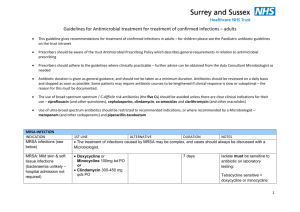
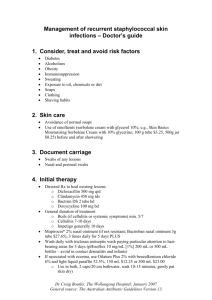
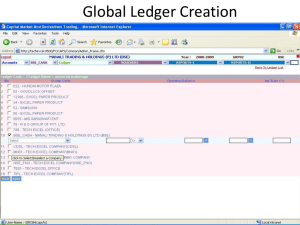
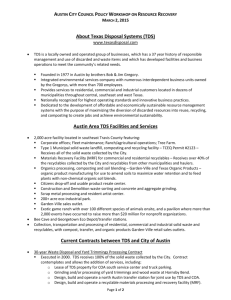
![Antibiotics [pre:Dfreq, post: D dose by 50%]](http://s3.studylib.net/store/data/007691453_2-0141a33ae9700e59544c7b2d9c70f9a5-300x300.png)